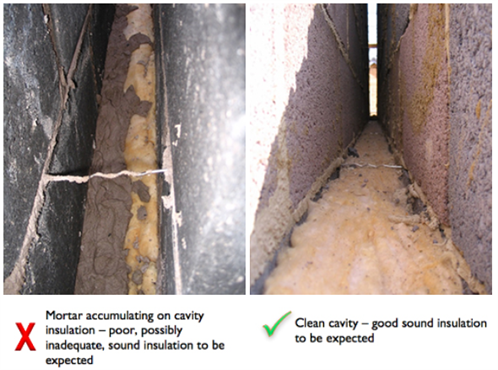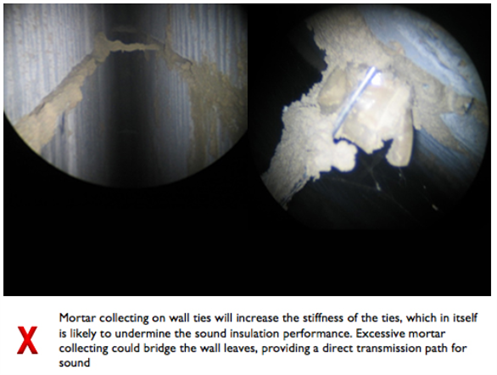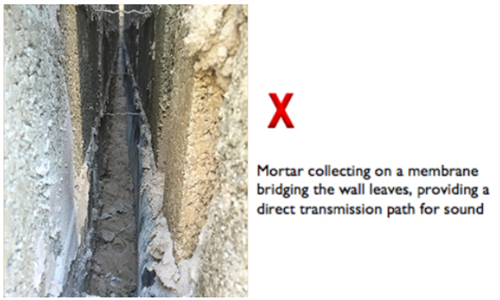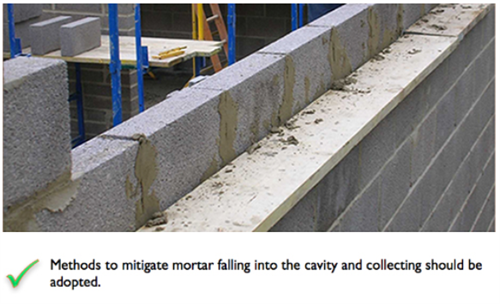Keeping Mortar where it’s meant to be…
According to Wikipedia, mortar can be defined as ‘a workable paste used to bind building blocks (such as stones, bricks and concrete masonry units) together’.
However, the findings of the surveillance undertaken by robustdetails® suggest that, unfortunately, mortar is often found in places other than where it is required to bond the building blocks together. Indeed, the issue of mortar ‘being found’ in the cavity is the most significant cause of impaired sound insulation performance affecting cavity masonry separating walls.
The cavity of a separating wall is arguably the most important measure for providing sound insulation performance of walls, as this provides isolation between the adjacent dwellings. Maintaining this isolation is critical in relation to ‘resisting the passage of sound’ between the attached dwellings. Inevitably, the amount of isolation afforded by the cavity is limited by the connections that are required for structural reasons. These are most notably the foundation and, where necessary, the wall ties used to connect the wall leaves together. As outlined in the specifications provided in the Robust Details Handbook, these ‘known’ connections can be controlled with appropriate detailing and/or product specification. Mortar collecting in the cavity is an ‘unknown’ quantity – particularly in relation to its significance to the sound insulation performance.
If mortar is allowed to collect and accumulate within the cavity, the sound insulation performance of the separating wall could be undermined. In the worst cases, it can lead to failure to meet the minimum Building Regulations performance standard. It is therefore best to avoid problems, following the guidance provided in the robust details® specifications, by taking measures to prevent mortar falling into the cavity, and ensuring that any mortar that does fall in is carefully cleaned out.
Mortar that falls into the cavity is most likely to collect at the base of the cavity, on continuous gas membranes, but also on built-in cavity insulation and on wall ties. It is therefore important that, during the construction of cavity masonry walls, site personnel should ensure that:
• excess mortar and debris doesn’t fall down the cavity
• mortar and debris that collects and builds up within the cavity is removed
• wall ties, built in cavity insulation and, where used, continuous gas membranes (or the like) are regularly
cleaned to avoid mortar build up
• mortar or debris does not bridge the wall leaves together at any point.




Finally, remember that mortar is welcome but only in the right quantities and the right places to ensure all joints between blocks are fully filled.
If you have any techncial enquiries please do not hesitate to contact our technical team on 03300 882140 or email: technical@robustdetails.com
Return to the Top Tips page

